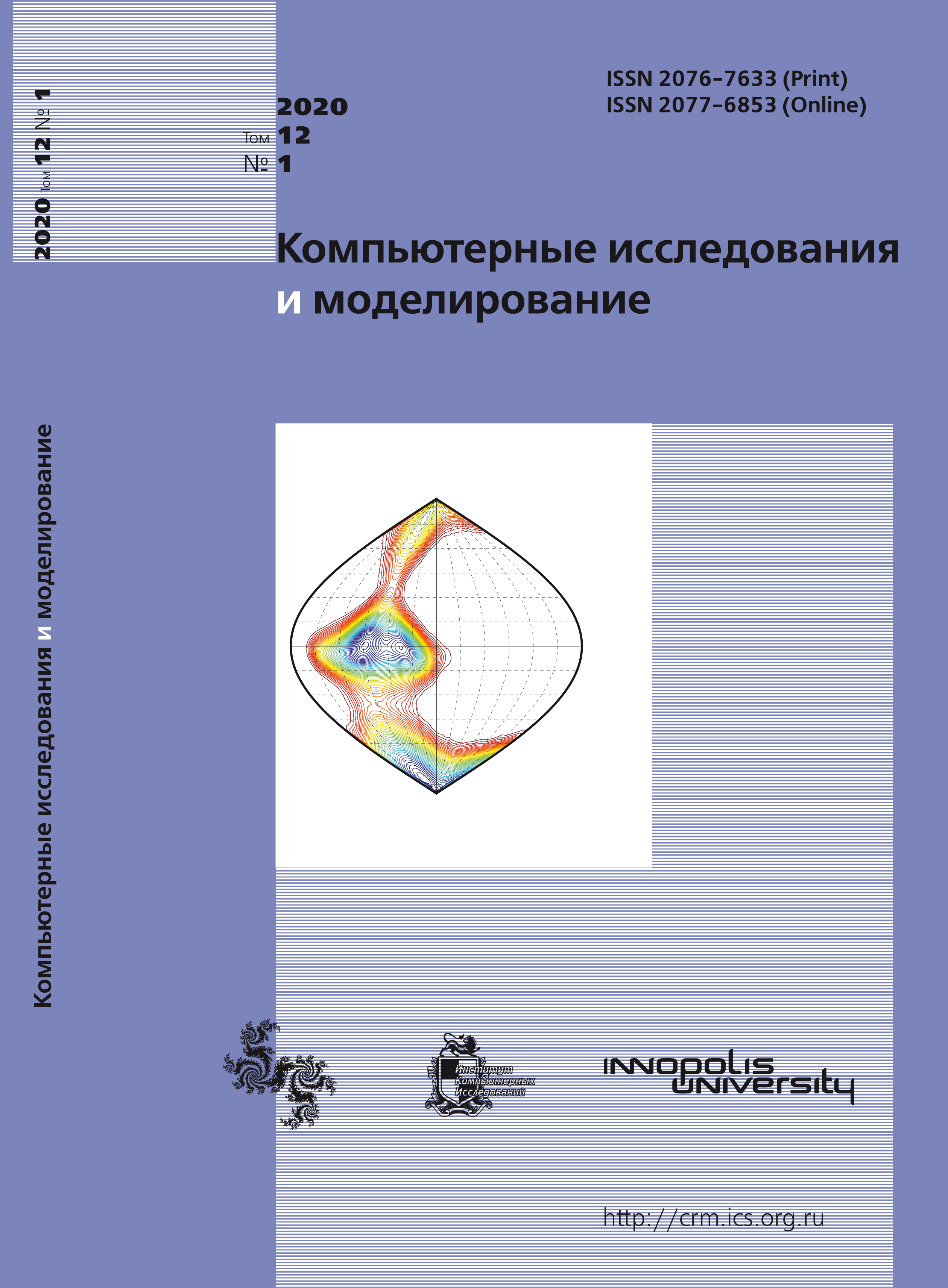All issues
- 2024 Vol. 16
- Issue 1 (special issue)
- 2023 Vol. 15
- 2022 Vol. 14
- 2021 Vol. 13
- 2020 Vol. 12
- 2019 Vol. 11
- 2018 Vol. 10
- 2017 Vol. 9
- 2016 Vol. 8
- 2015 Vol. 7
- 2014 Vol. 6
- 2013 Vol. 5
- 2012 Vol. 4
- 2011 Vol. 3
- 2010 Vol. 2
- 2009 Vol. 1
Numerical study of intense shock waves in dusty media with a homogeneous and two-component carrier phase
 pdf (698K)
pdf (698K)
The article is devoted to the numerical study of shock-wave flows in inhomogeneous media–gas mixtures. In this work, a two-speed two-temperature model is used, in which the dispersed component of the mixture has its own speed and temperature. To describe the change in the concentration of the dispersed component, the equation of conservation of “average density” is solved. This study took into account interphase thermal interaction and interphase pulse exchange. The mathematical model allows the carrier component of the mixture to be described as a viscous, compressible and heat-conducting medium. The system of equations was solved using the explicit Mac-Cormack second-order finite-difference method. To obtain a monotone numerical solution, a nonlinear correction scheme was applied to the grid function. In the problem of shock-wave flow, the Dirichlet boundary conditions were specified for the velocity components, and the Neumann boundary conditions were specified for the other unknown functions. In numerical calculations, in order to reveal the dependence of the dynamics of the entire mixture on the properties of the solid component, various parameters of the dispersed phase were considered — the volume content as well as the linear size of the dispersed inclusions. The goal of the research was to determine how the properties of solid inclusions affect the parameters of the dynamics of the carrier medium — gas. The motion of an inhomogeneous medium in a shock duct divided into two parts was studied, the gas pressure in one of the channel compartments is more important than in the other. The article simulated the movement of a direct shock wave from a high-pressure chamber to a low–pressure chamber filled with a dusty medium and the subsequent reflection of a shock wave from a solid surface. An analysis of numerical calculations showed that a decrease in the linear particle size of the gas suspension and an increase in the physical density of the material from which the particles are composed leads to the formation of a more intense reflected shock wave with a higher temperature and gas density, as well as a lower speed of movement of the reflected disturbance reflected wave.
Indexed in Scopus
Full-text version of the journal is also available on the web site of the scientific electronic library eLIBRARY.RU
The journal is included in the Russian Science Citation Index
The journal is included in the RSCI
International Interdisciplinary Conference "Mathematics. Computing. Education"






